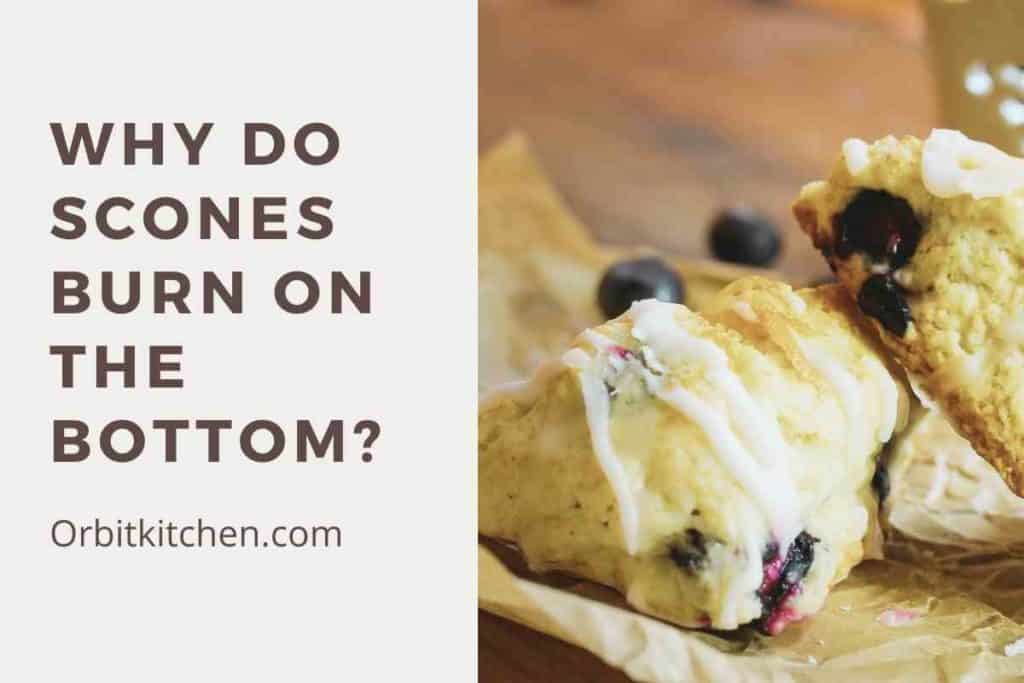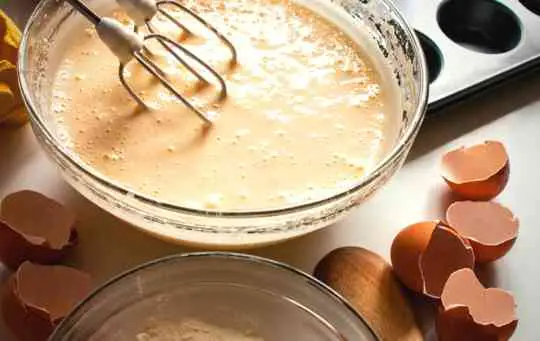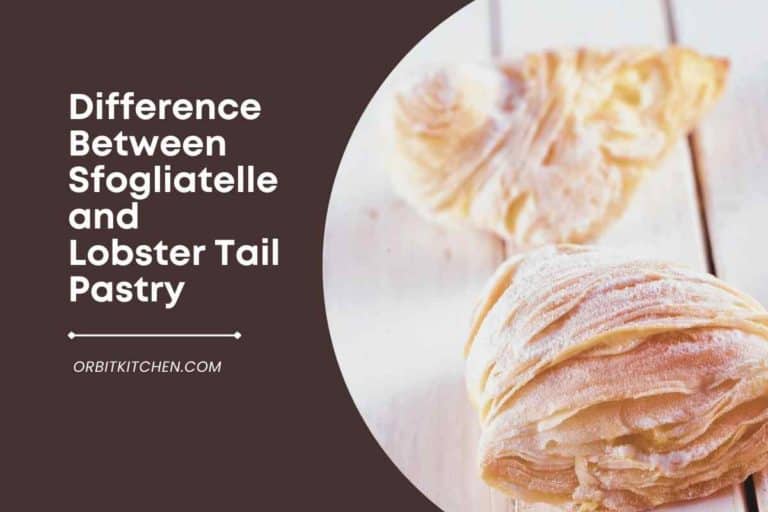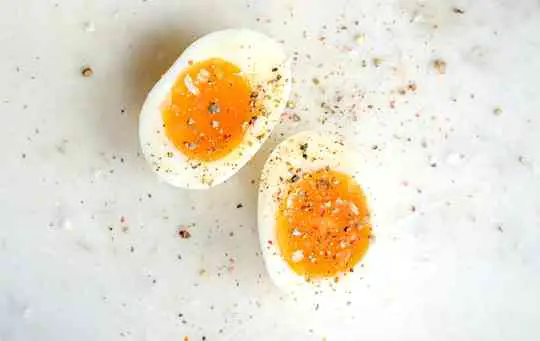Why Do Scones Burn on the Bottom?
There’s nothing better than fresh scones straight from the oven, but making scones is tricky. As with other baking products, mastering the art of baking scones requires a great deal of concentration. As scones are usually burnt on the bottom, making the perfect scones involves understanding why this happens.
Why Do Scones Burn on the Bottom?
The butter goes down in the scones and forms a spot before entering the oven. When the heating starts, the butter scorches and burns the bottom. It usually happens if you forget to preheat the oven and bring the scones from the refrigerator to spend waiting to heat the oven.
The main reason for burning scones on the bottom is direct radiant energy transfer. During the baking process, when the scones are placed on the baking sheet for baking, direct heat is used to penetrate the baking sheet, causing the bottoms of the scones to burn. As a result, the direct heat causes burnt scones.

Why Do Scones Burn on the Bottom?
Scones are small, often unsweetened, or lightly sweetened baked goods made of barley flour or oatmeal. Traditionally, scones are made with a special recipe of flour, butter, soda, sugar, and salt. It is glazed with egg wash.
So, why do my scones burn on the bottom?
The burnt scones on the bottom can also be caused by several factors, including the fact that scones contain a high level of butter, and the dough becomes warm while the oven is heating up. Also, the time difference between dough warming and oven heating could cause a large amount of energy to the baking sheet.
Use cold butter and keep the scones in the freezer while preheating the oven. If you forget to preheat the oven, replace the parchment paper with a fresh one before baking. To learn more about the burnt scone, keep reading the following article.
If you are interested in checking out the best scone pans, you can find them here.
Why Do Scones Hard on the Bottom?
The scones remain hard on the bottom due to overworking or overmixing the dough, resulting in chewy, tough, and hard scones. The key is to mix it lightly with a soft hand and keep doing it until it combines. Adding extra sugar and overbaking also harden the scones from the bottom.
If you want to eat the flakiest scones, then use anything in it but start with the cold ingredients. It prevents the butter from melting and uses cold butter while kneading dough. Make sure to keep it in the freezer after mixing all ingredients and shaping the scones.
If you feel bumps and lumps in the dough once it’s mixed, it’s ready for baking.
Keep all the required ingredients in the refrigerator for perfect scones, including eggs, butter, and cream. It is best to preheat the oven and put the cold dough in it before baking to prevent the Hardening of scones from the bottom. If you follow these hacks, your scones would never be going hard from the bottom.
Also, check out our detailed guide about why do cakes burn on the bottom.
What Temp to Cook Scones?
What temperature to bake scones? They are typically baked at a high temperature, around 425-450 degrees Fahrenheit (220-230 degrees Celsius). This allows the scones to rise quickly and gives them a crispy exterior.
However, the specific temperature for baking scones may vary depending on the recipe you are following. It is always best to follow the recipe’s instructions for the best results.
How Do You Know If Scones Are Cooked?
You can tell if scones are cooked by inserting a toothpick or a knife into the center of the scone. If it comes out clean, the scones are fully cooked. The scones should also be golden brown on the outside, which is another indicator that they are done.
Additionally, the scones should sound hollow when tapped on the bottom. If the scones are not fully cooked, you can return them to the oven for a few more minutes until they are done.
Why Is My Oven Burning Things on the Bottom?
Your oven burns bottom of everything for a number of reasons:
- The temperature in the oven is too high. Make sure the thermostat in your oven is set to the appropriate temperature.
- The oven needs cleaning: Burning may result from a buildup of food or grease on the oven floor. Make sure the oven is spotless and debris-free.
- Verify that the oven rack is in the appropriate position for the food you are cooking before continuing. Some recipes call for the rack to be in the center, while others call for it to be in the lower position.
- Too thin or dark of a baking sheet: Using baking sheets that are too thin or dark can result in burning. Instead, attempt using a sturdier, lighter-colored baking sheet.
- The oven’s level is off. Check to see if your oven is level and not leaning to one side.
- There is a broken oven door seal, which can lead to uneven cooking and heat loss. You should examine the door seal for damage and replace it if necessary.
How Do You Soften Hard Scones?
You can reheat the hard scones to soften them once again. Storing leftovers or fresh scones for 1-2 days usually makes them harder. You can preheat the oven to 300 degrees, place the scone on the middle rack, and heat them for 2-3 minutes, and you’ll get the soft scones again.
The frozen scones can also be softened again; first, deforest them for 2-3 hours at room temperature. Preheat the oven to 140 degrees and heat the song for 3-5 minutes or pop it in the microwave for 10-20 seconds. But the best way to soften the hard scones is in the oven.
Place a glass of water in the oven with a scone work to moisten the scones and make them soft.
Sometimes, the oven doesn’t work for entirely rock-hard scones; they do not moisten when placed in the oven. It is also recommended to use a saucepan with a lid and heat the scones for 5 minutes, turn off the heat and leave it for five more minutes to get good results.

You can find this top-rated Nordic Scone Pan on Amazon by clicking here.
Where Should Scones Be Placed in the Oven?
It would help if you baked the scones in the center of the oven to prevent them from becoming overheated. Place the scones on the baking tray side by side, touching each other to prevent them from swelling and keep the sides straight even when baked. In addition, the scones require more room to rise higher when they are separated.
The scones should be arranged side by side on the baking tray as they are just touching each other. The reason for setting them in such a way is to keep their sides straight as they are cooked. Place the scones on the baking tray to rise upwards, not outwards. You should place them in the middle of the baking oven.
Scone ingredients such as butter may melt if not baked at the right temperature or if not appropriately placed in the oven. The melted butter could alter the shape of the scones.
Arrange the cut-out scones together to make them riser better.
When placing the scones in a baking tray, they like to be cozy up there. It also raises the cooking process, so they need to be touched while placed in a baking tray. The reason to place scones side by side is that they force each other to rise upwards and rise outwards.
Read Also: What Can You Use Instead of a Scone Pan?
How Do I Get My Scones to Rising and Be Fluffy?
You can use baking powder and baking soda to make the scones fluffy and rise. The purpose of baking powder is to make baked goods fluffy and soft. It is essential to use fresh baking powder to achieve effective results.
Shortening and butter combinations also work well as an alternative to baking powder. As butter contains 80% fat and 20% water, it makes the scone more soft and fluffy. When the scones heat, the water evaporates, and the fats are absorbed into the flour, making them fluffy and light.
For fluffiest scones, measure butter, flour, baking powder, and liquid accurately.
Sometimes placing the scones in a cold oven suppresses the effect of the rising agent. For this, make sure to preheat the oven and put the cold-cut scones directly from the freezer in the oven. Stale baking powder has no effect and won’t form an airy texture in the scones.
Read Also: Are Glass Loaf Pans Suitable for Banana Bread?
What Is the Correct Shape for a Scone?
Scones are commercially sold in round shapes, although you can shape it what you like. In Bakeries, little triangle-shaped scones are baked and sold. Scones are essentially cakey and fluffy biscuits that You can bake into any shape you want.
Since scones were a Scottish dish, they were made from a relatively large cake, cooked on a grill, and cut into a pizza-type section. So we can say that the most original shape of scones is Triangle.
On the other hand, British scones were mostly seen around. With significantly lighter texture and crushes from the outside, scones were mostly served with tea in Britain. Generally, they are a bit smaller and round than the triangle scones.
Read Also: Can You Microwave Toaster Strudels?
What to Do If Scone Dough Is Too Wet?
If you found the scones dough too wet, let it chill for 30-60 minutes, and dump the dough on the floured surface. Also, add a little flour to the top of the refrigerator. Try to handle it as little as you can to prevent sticking. Dust your hand with flour while cutting and shaping the scones.
The texture of the scones must be a little dry and sticky as it helps to raise the dough, making it fluffier and perfectly textured. The drier the dough, the less the scones rise in height in the oven. To avoid too much wet and dry dough, take the exact measurement of the ingredients.
Since the texture of scones must not be too much or too dry, make sure to use little liquid and chilled ingredients. The chilled ingredients help maintain the texture of the scones, and do not knead the dough, mix or stir all the ingredients with a light hand to get the perfect texture of the scones.
Do not knead the dough; only stir or mix it with a light hand.
Conclusion
It’s hard to beat the fresh and fluffy scones at tea time, and following the above instructions will help you make the best scones. Make sure you use fresh and chilled ingredients to ensure the perfect texture. The best way to get the fluffiest scones is to bake them in a preheated oven.
FAQs:
Why Did My Scones Burn on the Bottom?
Scones may burn on the bottom if they are baked at too high of a temperature or if they are left in the oven for too long.
How to Make Scones Rise Higher?
To make scones rise higher, make sure your ingredients are cold, handle the dough as little as possible, and use a hot oven to bake them.
Why Does the Bottom Burn of Scones?
The bottom of scones may burn if they are placed too close to the bottom of the oven or if the baking sheet is not lined properly.
How to Keep Scones Fresh?
To keep scones fresh, store them in an airtight container or wrap them tightly in plastic wrap and store them at room temperature for up to two days.
Why Do My Cakes Burn on the Bottom?
Cakes may burn on the bottom if they are baked at too high of a temperature, if the oven rack is placed too low, or if the baking pan is not lined properly.
Why Are My Scones Hard?
Scones may be hard if they are overworked when mixing or if they are baked for too long.
Are Scones Supposed to Be Hard?
No, scones are not supposed to be hard. They should have a slightly crisp exterior and a tender, flaky interior.
Why Do Scones Burn on the Bottom?
Scones burn on bottom if they are baked on a hot surface or if they are baked for too long at a high temperature.






